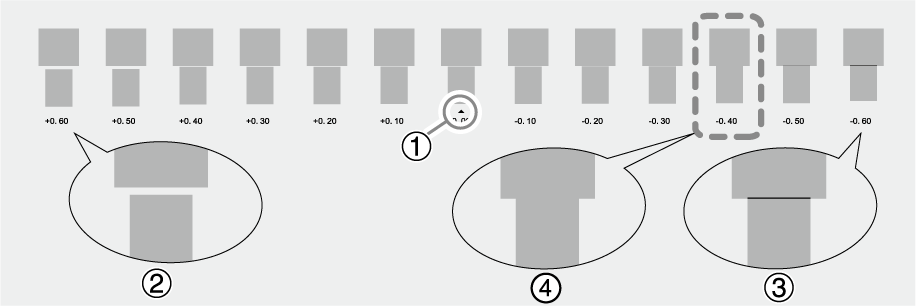Reducing Horizontal Bands (Feed Correction Function)
The band-shaped "stripes" are called "horizontal bands" or "banding."
First, print a test pattern, and then determine and enter the correction value. After entering the correction value, print a test pattern again and check the correction results. Repeat the process of printing a test pattern and entering a correction value several times to find the optimal correction value.
Procedure
- Press [MENU].
- Press [▼] several times to display the following screen.
- Press [▶] to display the following screen.
-
Press [ENTER].
Printing of the test pattern starts.
- When printing is finished, press [▼], then [▶] to display the screen shown below.
-
View the printed test pattern, and then determine the correction value.
The current correction value () is that of the figure indicated by "
." Select the value to make the gap () and overlap () between the upper/lower squares smallest (). In the case of the following figure, select "-0.40." When you cannot choose between two sequential numbers, specify a value that is between them.

- Press [▲] or [▼] to select the correction value.
- Press [ENTER] to confirm your entry.
- Press [◀][▼] to display the following screen.
-
Press [ENTER].
Printing of the test pattern starts.
- Check the test pattern to see whether the correction was successful.Check that the gap and overlap are the smallest for the figure indicated by "
" (that is, the current correction value). If the gap and overlap are smaller for another figure, set the correction value again.
- When you have successfully performed the correction, press [MENU] to go back to the original screen.MEMO
Default setting: 0.00%
Depending on the software RIP you are using, you can also configure this setting in the software RIP (by, for example, choosing the media type). When you have made the setting in the software RIP, the software RIP's setting is used and the printer's setting is ignored.